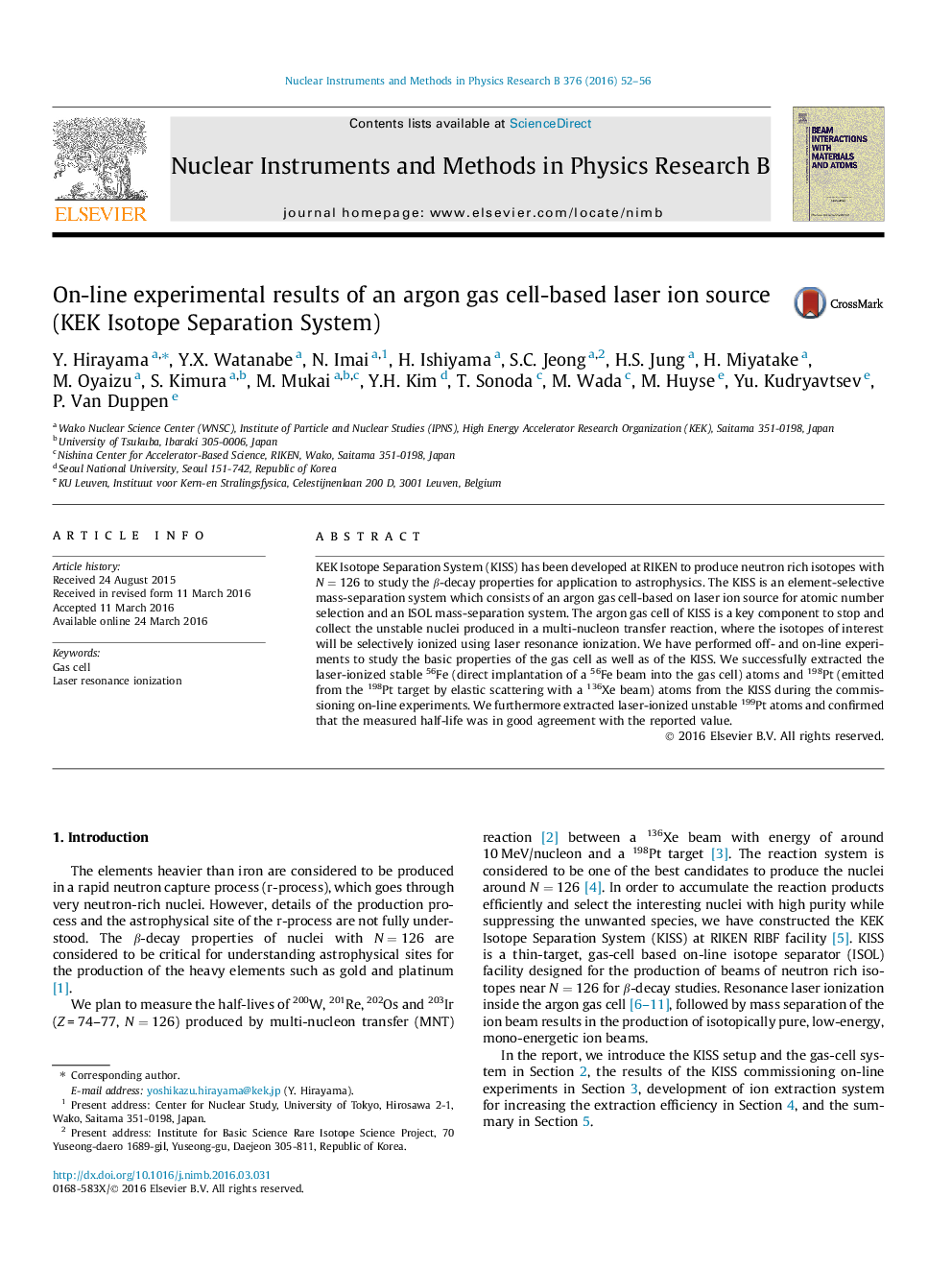| Article ID | Journal | Published Year | Pages | File Type |
|---|---|---|---|---|
| 8039716 | Nuclear Instruments and Methods in Physics Research Section B: Beam Interactions with Materials and Atoms | 2016 | 5 Pages |
Abstract
KEK Isotope Separation System (KISS) has been developed at RIKEN to produce neutron rich isotopes with N=126 to study the β-decay properties for application to astrophysics. The KISS is an element-selective mass-separation system which consists of an argon gas cell-based on laser ion source for atomic number selection and an ISOL mass-separation system. The argon gas cell of KISS is a key component to stop and collect the unstable nuclei produced in a multi-nucleon transfer reaction, where the isotopes of interest will be selectively ionized using laser resonance ionization. We have performed off- and on-line experiments to study the basic properties of the gas cell as well as of the KISS. We successfully extracted the laser-ionized stable 56Fe (direct implantation of a 56Fe beam into the gas cell) atoms and 198Pt (emitted from the 198Pt target by elastic scattering with a 136Xe beam) atoms from the KISS during the commissioning on-line experiments. We furthermore extracted laser-ionized unstable 199Pt atoms and confirmed that the measured half-life was in good agreement with the reported value.
Keywords
Related Topics
Physical Sciences and Engineering
Materials Science
Surfaces, Coatings and Films
Authors
Y. Hirayama, Y.X. Watanabe, N. Imai, H. Ishiyama, S.C. Jeong, H.S. Jung, H. Miyatake, M. Oyaizu, S. Kimura, M. Mukai, Y.H. Kim, T. Sonoda, M. Wada, M. Huyse, Yu. Kudryavtsev, P. Van Duppen,
